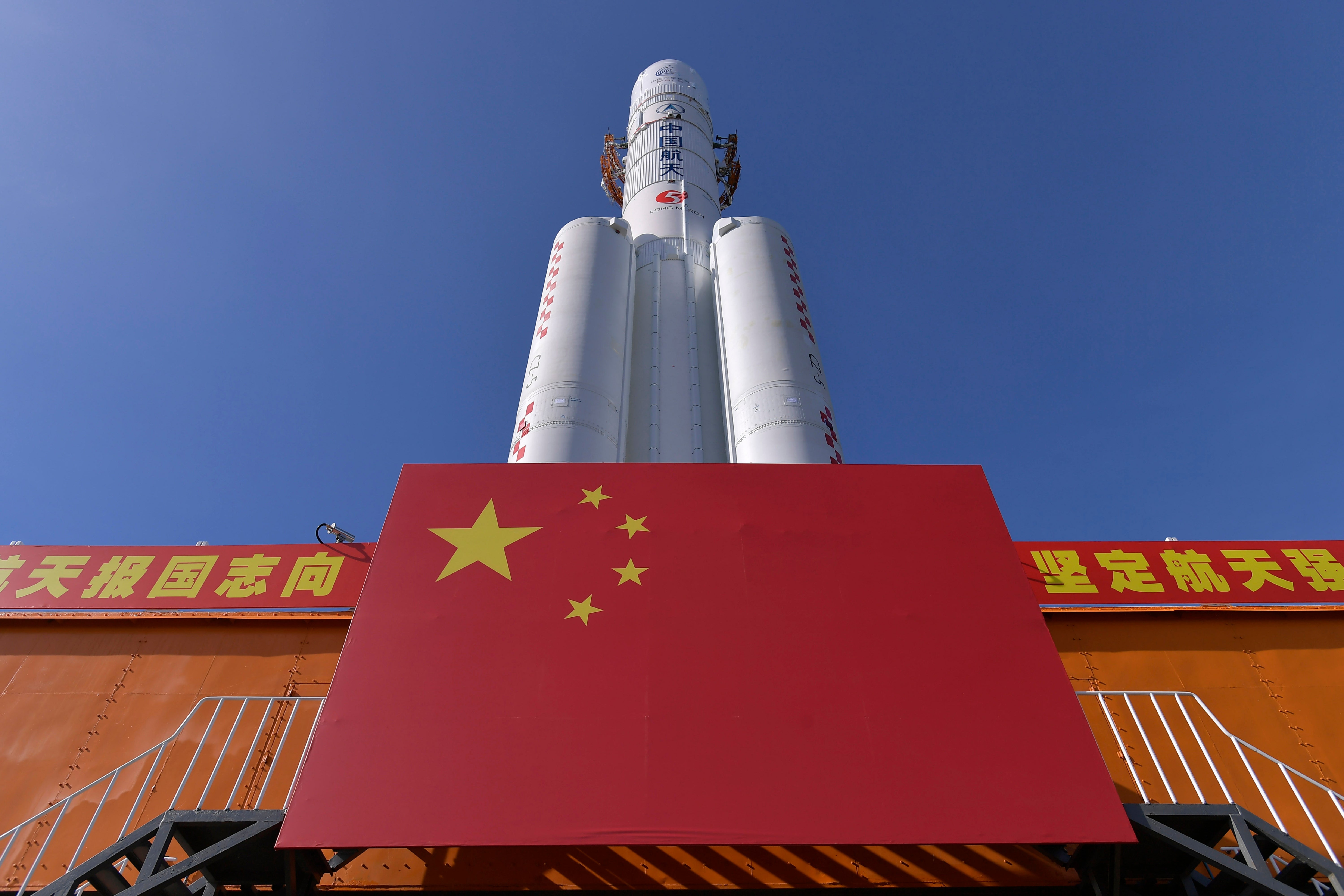China positions rocket ahead of ambitious mission to the moon for first time in four decades
China has moved a massive rocket into place in preparation for launching a mission to bring back materials from the moon for the first time in four decades

Your support helps us to tell the story
From reproductive rights to climate change to Big Tech, The Independent is on the ground when the story is developing. Whether it's investigating the financials of Elon Musk's pro-Trump PAC or producing our latest documentary, 'The A Word', which shines a light on the American women fighting for reproductive rights, we know how important it is to parse out the facts from the messaging.
At such a critical moment in US history, we need reporters on the ground. Your donation allows us to keep sending journalists to speak to both sides of the story.
The Independent is trusted by Americans across the entire political spectrum. And unlike many other quality news outlets, we choose not to lock Americans out of our reporting and analysis with paywalls. We believe quality journalism should be available to everyone, paid for by those who can afford it.
Your support makes all the difference.China on Tuesday moved a massive rocket into place in preparation for launching a mission to bring back materials from the moon for the first time in four decades.
The Long March-5 was transported by tractor from its hangar to the nearby launch site at the space base in Wenchang along the coast of the southern island province of Hainan.
The Chang’e 5 mission it will carry is scheduled to launch early next week, placing a lander on the moon that will drill 2 meters (almost 7 feet) beneath the surface and scoop up rocks and other debris to be brought to earth. That would allow scientists to study newly obtained lunar materials for the fist time since the American and Russian missions of the 1960s and 1970s.
The mission, named for the Chinese moon goddess, is among China's most ambitious as its space program continues to build steam since it first put a man in space in 2003, becoming only the third nation to do so after the U.S. and Russia.
China currently has a mission on the way to Mars, along with a rover on the moon's far side that is providing the first full measurements of radiation exposure from the lunar surface, information vital for any country that plans to send astronauts to the moon.
China has increasingly engaged with foreign countries on missions, although U.S. law still prevents collaboration with NASA, excluding China from partnering with the International Space Station. That has prompted China to work on its own space station and launch its own programs that have put it in a steady competition with Japan and India among Asian nations seeking to notch new achievements in space.
The space program has progressed cautiously, with relatively few setbacks in recent years. The Long March-5, nicknamed “Fat 5” because of its bulky shape, failed on a previous launch attempt, but China's enormous pool of technical and engineering talent appears to have allowed it to overcome most obstacles.